STORE INFO
Location & Store Hoursmy cart
Secure checkout
Cannabis laws vary widely across the U.S., but are sometimes described in similar terms. Some states allow full adult-use sales. Others have medical-only systems, partial reforms, or none at all.
The difference is in terms that are often used interchangeably, but the meaning is not the same.
So what exactly is the difference between decriminalization and legalization?
Decriminalization means something is still technically illegal, but the penalties for it are less severe. You don’t get charged with a crime, but you might get a citation, a fine, or have the product confiscated.
When it comes to cannabis, this means that you’re not allowed to sell it, grow it, or buy it, but getting caught with a small amount won’t automatically lead to arrest or jail time.
While it doesn’t establish a legal market, decriminalization can reduce the personal and social impact of cannabis-related charges. In many states, it has helped ease pressure on the court system and reduce long-term consequences tied to minor possession, like losing a job or student aid.
Legalization means cannabis can be produced, sold, and purchased under a set of defined laws. This includes licensed dispensaries, product testing, tax collection, and rules for everything from packaging to advertising.
In most states that have legalized cannabis, adults over a certain age (usually 21) can purchase regulated products from authorized stores. Some states also allow home cultivation, with limits on how many plants you can grow.
Legalization reduces the need for informal or underground markets by making products legally available through licensed sellers. It also introduces quality control: lab testing, labeling standards, and dosage regulation help consumers understand what they’re buying.
For states, legalization can bring new revenue through cannabis taxes and licensing fees. For you, it can mean access without the legal uncertainty.
The main difference between decriminalization and legalization is that one leaves supply unregulated, while the other establishes how cannabis enters the legal system, from production to retail.
In decriminalized states, enforcement may be lighter, but day-to-day access is a problem. Cannabis isn’t openly sold, but it's still used, and without a legal system in place, people rely on unregulated sources.
Legalized states offer more of a structure. Licensed stores, tested products, and clear limits reduce ambiguity. You know where you can go, what you can buy, and how much is allowed.
That structure often applies to hemp-derived cannabinoids, too. In legalized states, cannabinoids like CBD and CBG may be available in dispensaries and they’re more likely to follow labeling, testing, and packaging requirements. Even though these compounds are federally legal when derived from hemp, they can sometimes get caught up in changes.
Texas illustrated this recently. A 2024 bill proposed banning consumable hemp products that contain any THC, something that would have affected many CBD items. The bill was vetoed, but it showed how quickly rules can change.
Recognizing the difference between decriminalization and legalization in practice makes it easier to understand how these laws affect access, clarity, and use.
In a legalized state, you can usually walk into a store, compare brands, check test results, and leave with a receipt. Products are often clearly labeled, showing THC levels, ingredients, and whether they contain cannabinoids like CBD. There are age restrictions and packaging rules, but there’s a system in place to guide both businesses and buyers.
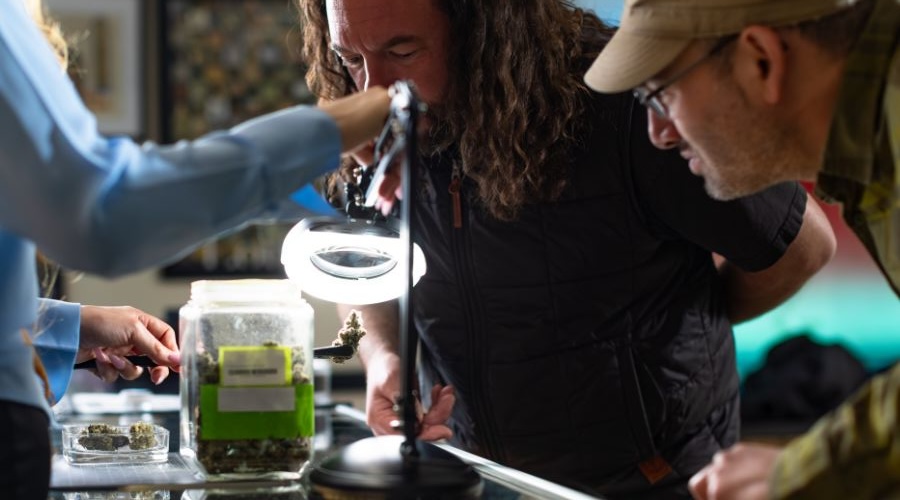
In a decriminalized state, you might be able to carry a certain amount without much risk, but there’s no legal way to buy it. That often pushes people toward unregulated sellers or gray-market products.
The difference between decriminalization and legalization is most obvious when it comes to quality. In legal markets you know exactly what you’re getting, while in decriminalized areas product sources are unknown and consistency is not certain.
So while both models might eliminate criminal penalties, they offer different experiences when it comes to shopping and access.
Carrying cannabis across state lines is illegal under federal law, even if both states have legalized it. Hemp-derived cannabinoids like CBD are treated differently at the federal level, but state laws still vary.
Here's what to keep in mind before traveling with any cannabis-related product.
Some states allow full-spectrum products, others permit only THC-free versions. Look up possession limits, THC thresholds for hemp products and product restrictions (some states don’t allow smokables, infused foods etc.).
If carrying CBD or CBG, keep the original packaging and a Certificate of Analysis (COA). This shows THC content is within the federal limit (less than or equal to 0.3%) and helps if questions come up during travel.
TSA permits hemp-derived CBD, but enforcement can vary. Carry sealed, clearly labeled products. Avoid raw flowers, and check airline policies for vapes or infused items.
Carrying large amounts of any cannabis product, even legal ones, can lead to more scrutiny or different enforcement rules depending on the state.
So, is decriminalization the same as legalization?
No, even though they are often discussed together, they reflect different legal approaches. The difference between decriminalization and legalization shapes what you can carry, where you can buy, and how safe your product really is.
Knowing how your state defines these terms can help you understand what’s allowed and what isn’t. This applies to THC products but also to how CBD and other cannabis-derived compounds are handled at the state level.
Make sure to keep informed so you can always navigate all compliance with confidence.
Poor gut health can show up in a number of ways—bloating, cramping, irregularity, and food sensitivities among them. It can even influence how you feel day to day, from energy to mood.
There’s a lot of ways to try to manage it: probiotics, elimination diets, fermented foods, digestive enzymes, and stress management routines. But sometimes, the symptoms persist.
However, there is one more thing you can try. And that’s using CBD for gut health.
The connection between CBD and gut health starts with the body’s endocannabinoid system. These receptors are linked to processes that affect how the gut moves and responds.
Your digestive system responds to what you eat, how you move, and how stressed you feel. That’s where CBD can offer support.
It interacts with CB1 and CB2 receptors, which are found throughout the gut lining and nervous system. These receptors influence gut motility, inflammation, and sensitivity. If you’ve ever had a stomach response in periods of stress, you know exactly how gut function and the nervous system are tied.
Using CBD for gut health can be a way to support overall balance, particularly when your digestion feels out of sync.
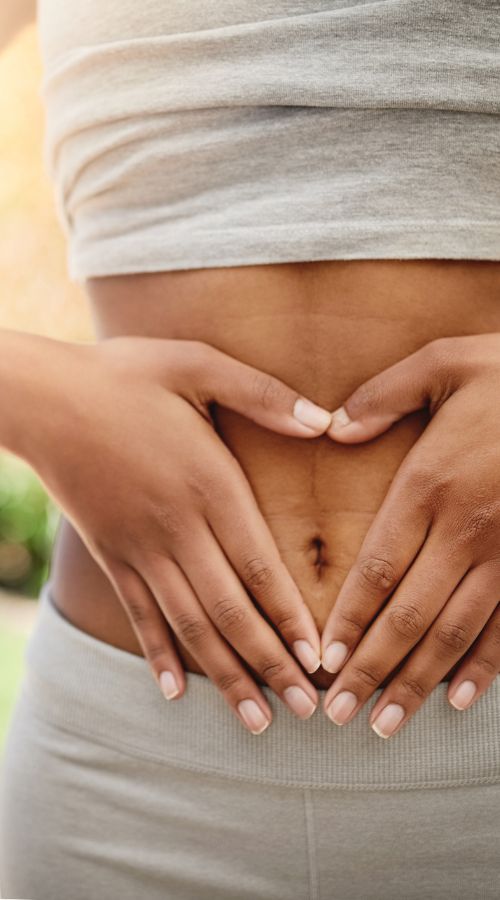
CBD for digestion may offer additional support to what you’re already trying. It doesn’t really work like a digestive enzyme or a probiotic, but it interacts with systems that help regulate how your gut behaves and responds.
When the digestive tract is moving too fast or too slow, symptoms like constipation, diarrhea, or bloating can occur. CBD may help normalize that movement and promote balance.
Inflammation in the gut lining can contribute to discomfort, sensitivity, and reactivity to certain foods. CBD may support a calmer environment in the digestive tract.
A strong gut barrier keeps out irritants and helps maintain a stable environment. CBD may support that barrier's function, which plays a role in how reactive the gut may feel.
There’s early research showing that CBD can influence microbial activity in the gut, which may help promote a healthier mix of bacteria. A balanced microbiome is linked to better digestion, immunity, and mood.
If you’re considering taking CBD for digestion, a little structure goes a long way. It may take you some time to see if it’s actually helping, and being consistent and starting with a small dose is the way to go.
The easiest addition to your routine could be in the form of a tincture. The dose is precise, and the carrier oils in tinctures help CBD kick in faster.
Timing matters too when using CBD for gut health. Some people can find it helpful before meals, others prefer it in the evening to calm nervous system tension that disrupts digestion.
It’s also important to start with a low dose, usually 5 to 10 mg of CBD once a day, and stick with it for about a week. If you feel nothing, increase slowly. The goal should be to find the lowest effective dose. Keep a simple log of symptoms, like bloating, irregularity, or post-meal discomfort. A few words each day is enough to start spotting patterns.
And, it’s always a good idea to accumulate good habits. Combine CBD for digestion with other gut-friendly habits, like fiber-rich meals, breathwork before eating, or a consistent sleep schedule. CBD is just added support to what your body is already trying to do.
If you’re consistent for two or three weeks and notice smoother digestion, fewer flare-ups, or less discomfort, that’s a good sign it’s working for you.
Adding CBD for gut health to your routine is generally considered low risk, but it’s not something to take blindly. There are a few things that you need to look out for.
More isn’t always better. Too much CBD at once can actually cause digestive discomfort in some people, including loose stools or nausea. If you’re dealing with a sensitive gut, keep the dose low until you see how your body responds.
Low-grade CBD can contain contaminants, inconsistent cannabinoid levels, or irritating carrier oils. Always choose products with third-party lab results (COAs), and look for clean carrier oils like MCT or olive oil.
If you’re taking medications or gut health supplements, CBD could affect how your body processes certain supplements or medications. Always check with your healthcare provider if you're on a treatment plan.
Pregnancy, breastfeeding, or serious GI conditions like Crohn’s or colitis are also cases where it’s better to avoid self-medicating with CBD.
Taking CBD for gut health may support how you feel, but only when the approach is thoughtful. Stick to high-quality products, start small, and pay attention to your body along the way.
Gut health isn’t simple but taking CBD for gut health has real potential when used with intention. If your digestion feels reactive, sluggish, or influenced by stress, using CBD for digestion could keep things balanced.
Just keep your expectations grounded. The goal is to support your digestive system, especially during times when your gut feels more sensitive than usual. And if you’re already working on your diet or stress levels, CBD might be the extra layer that helps everything work a little better.
Over the past few months, Texas has been in the spotlight for its debates over cannabis laws. The story has moved quickly, with bills being introduced, vetoed, and rewritten, leaving many Texans unsure about what’s actually happening.
To clear things up, let’s start by looking at what lawmakers originally proposed and why it stirred so much debate.
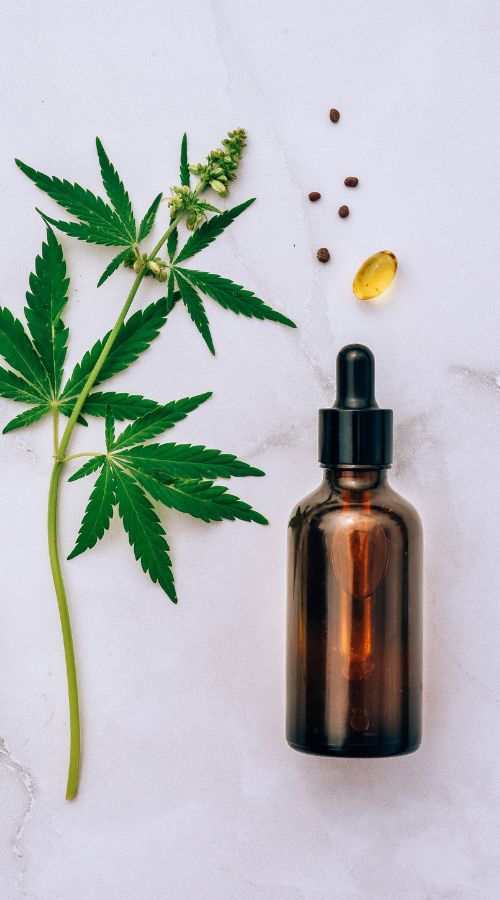
If you’ve been reading headlines about a “Texas THC ban,” it can sound like the state suddenly outlawed something that was legal before. But here’s the truth: THC has never been legal for recreational use in Texas.
So what are people actually talking about when they mention a “THC ban in Texas”?
In 2019, Texas legalized hemp after the federal Farm Bill. That law set the rule that hemp could have up to 0.3% delta-9 THC by dry weight. Once hemp became legal, products like CBD oils, CBG tinctures, and hemp gummies showed up in stores all across Texas.
A consequence was that some producers began making hemp-derived products (like delta-8, THCA, and certain hemp-based delta-9 items or vapes) that technically complied with the less than 0.3% delta-9 THC limit but could still cause intoxicating effects under some conditions.
So, the Senate Bill 3 (SB 3) was introduced. The idea was to close the loophole and stop intoxicating hemp products from being sold so openly. Supporters said labeling wasn’t reliable, testing was inconsistent, and minors could buy products with little restriction.
When lawmakers filed SB 3 in Texas earlier this year, it went way beyond closing the loophole on delta-8 or THC vapes. The bill stated that any consumable hemp product containing any amount of a cannabinoid other than CBD or CBG would be prohibited under SB 3. It would target the intoxicating products that concerned lawmakers, but also everyday hemp items like some full-spectrum CBD oils and gummies that contain small amounts of THC.
If SB 3 had become law, it would have pulled many hemp-derived products off shelves in Texas overnight. Retailers would have lost some product lines, especially those with hemp-derived cannabinoids, and some small shops warned they might face serious financial strain or closures depending on how enforcement played out. Farmers and manufacturers said the bill risked serious harm to the state’s hemp industry, which has expanded since 2019 under more permissive laws.
Here are the ways in which the proposed Texas hemp ban goes beyond what the Farm Bill requires:
Original Farm Bill / 2019 Texas Law: Products with less than or equal to 0.3% delta-9 THC allowed, even if some other cannabinoids are present.
Proposed / Attempted Texas Rule: Ban of any consumable hemp product with any detectable cannabinoid except CBD or CBG.
Original Farm Bill / 2019 Texas Law: More general control of farming and basic safety; no mass criminalization for minor sales under federal law.
Proposed / Attempted Texas Rule: Criminal penalties, licensing requirements, and tight sales and marketing restrictions, even for products that under Farm Bill terms are “legal hemp.”
Original Farm Bill / 2019 Texas Law: Less prescriptive labeling/marketing requirements.
Proposed / Attempted Texas Rule: Requirements for labeling, advertising, marketing to avoid child appeal, in some proposals, strict oversight.
The pushback came fast.
Business owners argued that Texans rely on hemp-derived products for wellness, stress relief, and better sleep, and those shouldn’t be taken away because of a loophole in the law. They supported tighter rules on testing and age limits, but warned that prohibition wasn’t the answer.
In June 2025, Governor Greg Abbott vetoed Senate Bill 3. In his statement, he said the bill went too far and raised constitutional concerns. Instead of wiping out the hemp industry, he made it clear that a smarter approach would be stronger regulation.
But the fight didn’t end there. In the special sessions, senators introduced Senate Bill 6 (SB 6), which mirrored SB 3 in many ways, proposing bans or criminal penalties for consumable hemp products containing any cannabinoid other than CBD or CBG. The Senate moved quickly, but once the bill reached the House, things slowed down. Lawmakers there never brought it up for a final vote.
Why not? For many representatives, the economic fallout was too big to ignore. Shutting down small shops, hurting farmers, and cutting jobs across Texas didn’t feel like the right move. Others believed that regulation and age restrictions would work better than an outright ban. By the time the session ended, the broad Texas hemp ban was off the table.
Even though the big bans failed, Texas didn’t leave hemp alone. Lawmakers and the governor took a narrower approach that still reshaped the industry.
The first big shift came with the Texas Vape Ban (SB 2024). It went into effect on September 1, 2025, and banned the sale and marketing of vapes or e-cigarettes containing any cannabinoids (including delta-8, THCA, hemp-derived delta-9, and even some CBD vapes).
For retailers, it was a sudden hit—entire vape product lines had to be pulled off shelves, and selling them is now a Class A misdemeanor. For consumers, the law doesn’t criminalize possession, but it does make buying cannabinoid vapes legally in Texas impossible.
On September 10, 2025, Governor Abbott issued Executive Order GA-56. Instead of targeting one product, the order directed state agencies (DSHS, TABC, DPS) to build stricter rules across the board. That includes:
*Many of these measures are now in rule making stages, so specifics are still being finalized.
No, it never was. Recreational marijuana is illegal, and the medical program only allows low-THC oils.
What’s legal right now:
What isn’t legal:
If you’re shopping for wellness products, you can still feel confident buying CBD oils, gummies, and tinctures in Texas. The key is to look for trusted brands that provide lab reports (Certificates of Analysis) showing their products meet the legal standards. Make sure the shop checks ID (21+) and that labels clearly state THC levels and testing sources—these rules are already being enforced. Avoid vapes and anything that doesn’t clearly state what’s inside or where it was tested.
Even though the regulations are tightening, hemp-derived CBD remains legal. Choosing transparent, compliant products and being aware of new labeling and age requirements—is the best way to stay on the safe side as Texas continues to refine its laws.
Hemp is grown for clothing, rope, and even seed. But it also has a flower rich in cannabinoids that is used for CBD products.
But there are differences between industrial and high-resin hemp.
How the hemp is cultivated and what it’s intended for is what separates industrial hemp and high-resin hemp. Here’s what you should know.
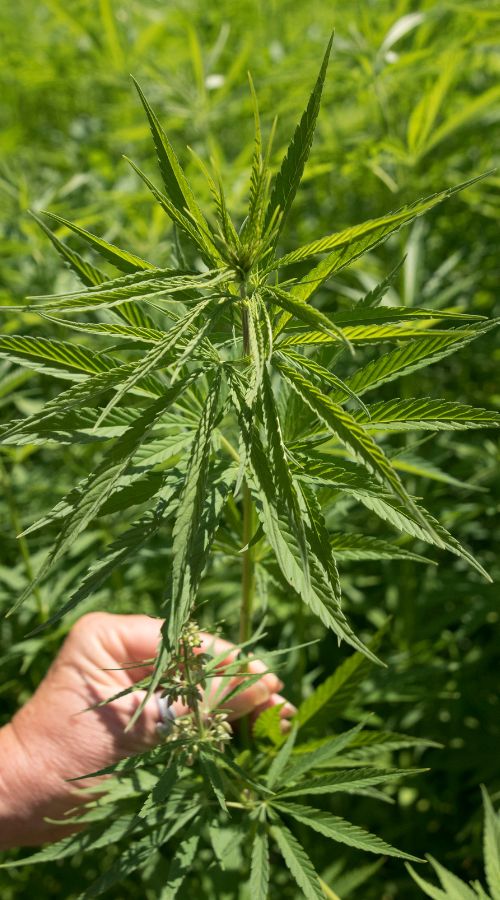
Industrial hemp is a type of hemp grown with utility in mind.
By legal definition, in the United States and based on the Farm Bill, it must contain less than or equal to 0.3% THC. That distinction means it can be cultivated and sold legally for non-intoxicating purposes.
So, what is industrial hemp used for?
Farmers grow it for strong stalks that can be turned into fiber for textiles, rope, and paper. The seeds of the plant are pressed for oil that is used in cosmetics and as food. Its fiber is being developed into bioplastics, sustainable composites and hempcrete, a material made from the inner core of the stalk, that is used as an eco-friendly alternative to traditional concrete and insulation.
Unlike varieties bred for high resin hemp flowers, industrial hemp plants don’t produce dense buds. They’re tall and sturdy, cultivated in large fields where the focus is on quantity.
High resin hemp or CBD hemp, on the other hand, is cultivated for its buds. High-resin hemp flowers contain high levels of cannabinoids like CBD, along with terpenes that give them their distinct scent and flavor.
The focus is on cultivating dense, high-resin hemp flowers with consistent cannabinoid profiles. These plants are shorter and bushier, and the end product can be smoked or used for making gummies, tinctures or topicals.
Because of the rich terpene content, products made from CBD hemp offer fuller flavor and aroma, and encourage the entourage effect.
The entourage effect is when cannabinoids like CBD and aromatic compounds such as terpenes work together in the body. This could make the impact stronger than any one compound on its own and provide a more effective experience.
The main differences between industrial hemp and CBD hemp are in how the plants are cultivated, what they produce, and how they’re used in CBD products.
The type of hemp used also influences how extracts are made. Industrial hemp can be processed at a large scale, so it’s commonly used to create CBD products, often through ethanol extraction. Ethanol is cost-effective and reliable, but it can sacrifice terpene richness compared to other methods.
High-resin hemp, on the other hand, is often reserved for smaller batch extraction where quality matters most. Methods like supercritical CO₂ extraction help preserve delicate cannabinoids and terpenes, producing a cleaner extract with better flavor and aroma.
These differences influence the safety, consistency, and effectiveness of the final product.
So why should you care what your CBD is made from if it seems to do the job?
The truth is, the source makes a big difference. Hemp grown for fiber or bulk extraction can’t deliver the same richness, safety, or consistency as flower bred specifically for cannabinoids and terpenes. That choice affects potency, flavor, safety, and even how enjoyable it is to use.
CBD hemp is cultivated specifically for its high-resin hemp flowers. These flowers hold higher levels of cannabinoids and terpenes compared to biomass, which is often made up of stems and leaves. That means products made from flowers are more potent and more flavorful.
Terpenes work alongside cannabinoids in what’s known as the entourage effect. Together, these compounds may produce a fuller, more effective experience than isolated CBD alone. Choosing CBD products made from high-resin flowers gives you that full-spectrum synergy.
High-resin hemp flowers are usually grown and handled with more care than bulk crops. Because the focus is on quality buds, it carries a lower risk of mold, mildew, or unwanted contaminants compared to material taken from stalks or trim.
CBD hemp has better flavor, aroma, and overall effectiveness. Products made from bulk material can still provide CBD, but they often lack the rich plant character and depth that come from flower-based extracts.
If the flavor, aroma, and effectiveness of your CBD products matter to you, pay attention to what they’re made from. Products made from high-resin hemp flowers instead of bulk industrial hemp have more cannabinoids, fuller terpene profiles, and cleaner extracts.
So, before you place an order for your favorite CBD products, take a moment to check what they’re made from. If it’s high-resin hemp, you’ll know you’re getting the kind of CBD experience that’s crafted with care from start to finish.
If you’re a coffee lover, you’re aware of just how many decisions one cup of coffee takes. Drip coffee or espresso. Regular or oat milk. Hazelnut or vanilla syrup. There might be another decision you want to add to that. CBD.
Why?
Because it can give you a more balanced experience.
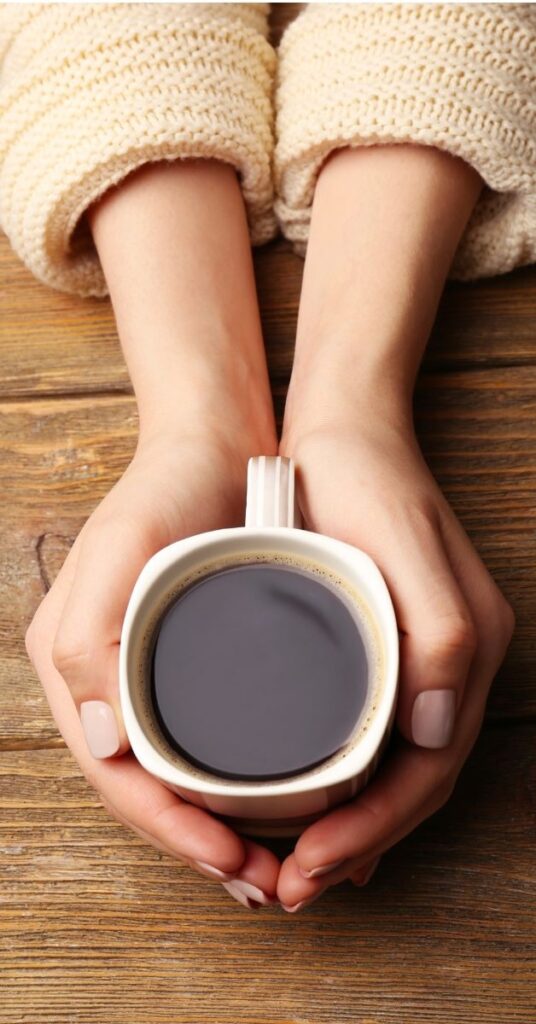
Coffee gives you much-needed energy. CBD can help take the edge off. The goal is to bring out the best in both.
Some people use coffee and CBD together to avoid the coffee jitters. Others say it helps with staying focused for a longer period of time, which is much needed when working or studying. And people who deal with general stress or social anxiety have found that CBD with caffeine takes the pressure off but doesn’t make them sleepy.
Timing is important, too. If you take CBD before coffee, you might feel more balanced from the start. If you wait until the caffeine kicks in, CBD can help with the crash or decrease any tension that shows up after.
Tinctures and oils tend to act faster, especially under the tongue. Edibles or capsules take longer, so they’re better if you want the effects to stretch into the afternoon. The dose plays a role, too. A small amount, 5 to 10 mg, can be enough to smooth things out without making you tired.
Taking coffee as a stimulant and CBD to relax may lead you to think that mixing CBD and caffeine sounds like a contradiction. But it’s not that simple.
Caffeine blocks adenosine receptors, the chemical that makes you sleepy. That’s what makes you alert after the first few sips of coffee. CBD, on the other hand, interacts with your endocannabinoid system and can help regulate mood, stress, and lots of other things.
When you take them together, CBD and caffeine shouldn’t cancel each other out. They could actually give you a better experience.
Research on CBD and caffeine is still limited. Published human studies that directly look at what happens when you combine them are few and far between, and the results are neutral at best.
In a 2023 study, 54 regular caffeine users were given 200mg of caffeine with varying doses of CBD. The study found no significant changes in how people felt, but determined preliminary safety evidence for consuming the two together.
Another study found something a bit more interesting: CBD might make caffeine stay longer in your system. When participants were given a steady dose of CBD, their bodies showed 15% higher peak caffeine levels, and overall caffeine exposure nearly doubled.
That’s the extent of it, for now. No one’s studied whether CBD and coffee improve focus or calm your nerves.
Still, plenty of people share their own experiences online. The general consensus is that mixing CBD and coffee makes you energized but may reduce the caffeine crash and the jitters that sometimes come with coffee.
The research may be scarce, but people are figuring it out for themselves.
Adding CBD to coffee is as easy as stirring in a few drops of oil. But there are a few things to get right if you want it to actually work.
Start with your regular coffee routine. Brew what you normally drink, then add your CBD oil or tincture once the coffee’s ready. Make sure there’s a bit of fat in it, like milk, oat milk, or cream. That helps with absorption, since CBD is fat-soluble.
If you’re using CBD with caffeine for the first time, go low. You should feel the effects with 10-20mg, but you don’t have to start there. Some do fine with half that. See how your body reacts, then adjust as needed.
You’ll also want to avoid CBD-infused coffee beans. A recent study showed that they often lose potency when brewed. If you want real CBD and coffee benefits, use tinctures or ready-made beverages that clearly label CBD and caffeine contents.
If you struggle with post-coffee jitters and anxiety, adding CBD to your coffee could help. This small shift in your morning routine works for a lot of people, and it can give you a more balanced experience, too.
The science is limited, but the combination of caffeine and CBD is deemed safe. If you’re curious, start simple. Add some CBD to your next cup and see what kind of difference it makes. You’ll know soon enough if it works for you.
Hangover, addiction, and health issues are just some of the many side effects of alcohol that can make drinking less fun. But drinking can be a fun social activity that you might not want to miss out on.
And while mocktails are a good alternative, there are a few more options to consider. I bet you’re wondering what the heck are CBD drinks, but we promise you won’t leave this page disappointed!
You can think of them as mocktails with benefits. They’re beverages infused with THC or CBD, which are derived from the cannabis plant. They won’t cause a hangover and can even offer some potential benefits.
These cannabis infused drinks have THC, the psychoactive compound found in cannabis. The effects usually take about 30 minutes to kick in, so taking it slow is recommended. THC drinks can make you more relaxed, make your food taste better, improve your mood, and cause a bit of euphoria. Perfect for a night out.
CBD-infused drinks have cannabidiol, the relaxing, non-intoxicating compound derived from cannabis. They won’t get you high, but they may help you unwind and put you in a better mood. You can have CBD drinks instead of alcohol while watching a movie or hanging out with friends. And they come with zero regret the next day.
So when an occasion calls for a toast, you can raise a THC or CBD drink instead of alcohol and have just as much fun.
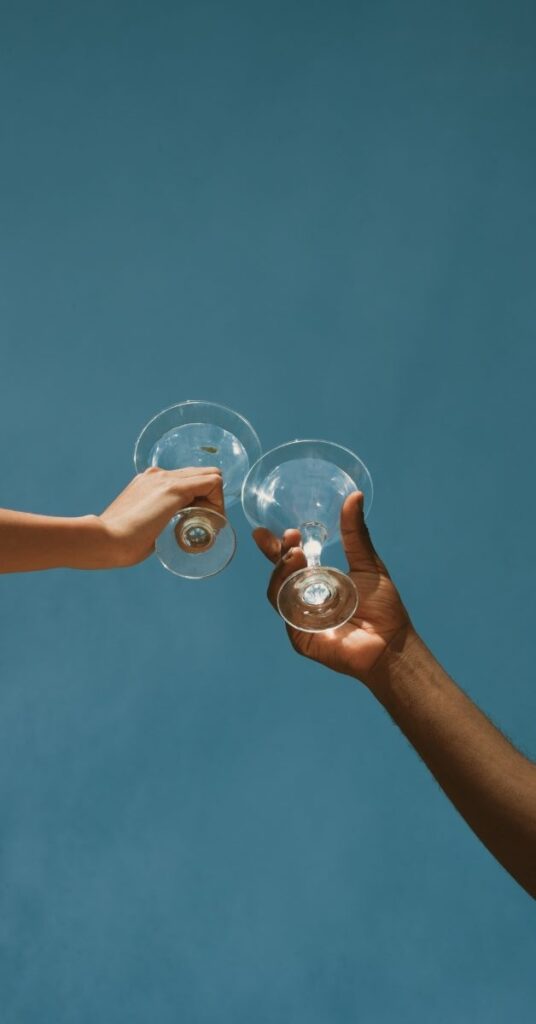
Alcohol messes with your skin, mood, energy, and sleep. With time, hangovers get worse and worse, and honestly, a lot of drinks don’t even taste that good.
Often, having “just one” drink can quickly turn into a whole night ordeal. And saying no in social settings still elicits weird looks and a whole line of questioning. But having a CBD drink in hand can get you off the hook.
Health is also a major reason why people are switching. Some are focused on gut health, others on addiction issues, and some are just doing “dry January.” Cannabis drinks still let you enjoy the ritual with no harm done.
So if you want to quit alcohol or need more options, the cannabis industry has the answers. And drinks are not the only options. You can stick to your favorite soda and get CBD benefits or a THC buzz with gummies or tinctures.
With the change in people’s habits, business numbers, too, are seeing a change.
In 2025, alcohol sales in the U.S. were not as stable as usual, with some categories experiencing a drop in sales, while cannabis drinks continued to climb. Some industry forecasts predict the cannabis drinks market to rise to $117 billion by 2032, globally, though growth will depend on laws and regulations.
And that growth is doing something else as well. Some big names from the alcohol industry are exploring cannabis drinks. Testing products in markets with clearer rules, partnering with established cannabis brands, or researching how to bring new drinks to store shelves.
The hype doesn't stop there. Bars in cities like LA, NYC, and Portland are serving CBD drinks instead of alcohol, for people who want to try something new.
And, if you’ve tried and loved CBD drinks, there’s a whole new world to explore.
Think of all the situations where you would reach for a drink. All of those can be replaced with something that can make you feel relaxed and grounded, with no harm to your health.
Say you’re used to pouring a glass of wine after work. Try switching to a CBD tincture instead. One dropper under the tongue, and you get that same wave of calm, without feeling groggy the next day.
If you’re used to a nightcap, reach for a CBD gummy for sleep. It’s a simple swap that can ease racing thoughts from a busy day at work, and support a calmer night’s sleep.
These aren’t one-size-fits-all solutions, but that’s kind of the point. With alcohol, you’re either drinking or you’re not. With CBD, you can tailor the experience: how strong, how fast, and how it fits into your day.
That flexibility is a big reason more people are turning to cannabis products when they’d usually reach for a drink.
If the ritual of a drink is what’s special to you, you don’t need to stock your fridge with branded CBD drinks to try this out. If you’ve already got a CBD tincture at home, you’re set.
Just add a dropper to sparkling water, iced tea, lemonade, whatever you’re already drinking. Stir it up, and that’s your CBD drink. It’s a simple way to unwind that doesn’t involve alcohol or a hangover.
If you want to get fancy with it, you can mix a tincture into a mocktail, like a cucumber mint spritz or a ginger lime soda. And since you’re using your own tincture, you know exactly how much CBD you’re taking. You can keep it light or make it stronger depending on how you feel.
It’s an easy way to try out CBD drinks instead of alcohol, without changing much about your routine.
Cannabis drinks can offer new ways to relax, without relying on alcohol. You can have something in your glass and still feel good, without the side effects.
So, it doesn’t matter if you reach for a store-bought can or make a CBD drink at home; the idea stays the same. You’re just choosing what feels good for you and your health, but are still participating in the rituals that you enjoy.
And if that spares you from a hangover, even better!
Honestly, decarboxylation sounds like something you should do in a lab, not your kitchen. And while lab decarboxylation is more controlled than oven decarboxylation, you really don’t have to be a scientist to do it.
It may sound intimidating, but it's actually a basic step that makes all the difference in how your CBD will work.
So, what is decarboxylation, and why should you care?
Decarboxylation is the process of heating cannabis or hemp to “activate” its compounds. In raw form, the plant has cannabinoid acids, like CBDa (cannabidiolic acid) and THCa (tetrahydrocannabinolic acid).
Your body doesn’t efficiently use those forms, so they undergo transformation to become more usable.
When you apply heat, through baking, vaping, or a controlled oven process, a chemical change happens. The plant compounds lose a carbon atom in the form of carbon dioxide. This shifts CBDa into CBD, and THCa into THC.
This process increases their usability in the body, making them easier to absorb and engage with physiological processes.
Without this step, THC remains non-psychoactive and CBD may be less effective in producing the desired responses in the body.
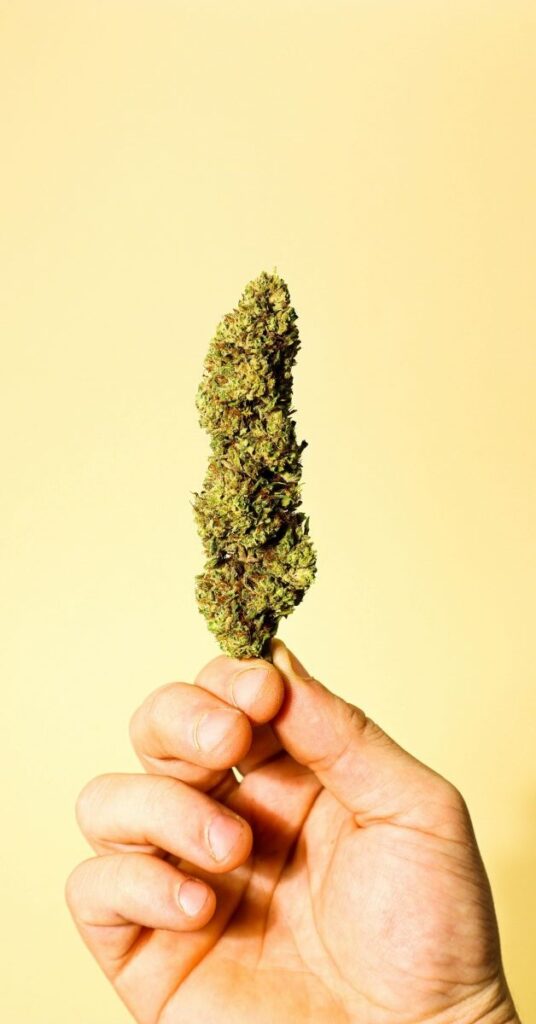
Yes, if you're buying a CBD tincture or gummy, the CBD has already been decarboxylated. You don’t need to worry about heating it yourself, the manufacturers take care of that step for you.
In a professional setting, decarboxylation is a precise, closely monitored process. Producers use industrial-grade equipment to heat hemp extract at controlled temperatures. This lets them activate the cannabinoids while preserving the terpenes, flavonoids, and other plant compounds.
Manufacturers also perform lab testing at different stages, before decarb, after decarb, and after formulation, to make sure the final CBD concentration matches the label.
So when you see “CBD” on a product label, it’s not CBDa. The work has already been done through careful decarboxylation in a lab-controlled environment.
Although CBD isn’t psychoactive, it generally needs to be decarboxylated to interact better in the body. Because of its different structure, the body doesn’t respond to CBDa as well. Many users believe that properties like calm support and balance are tied to the activated form.
This process also supports what’s known as the entourage effect. The idea is that CBD works better when it’s interacting with other cannabinoids, terpenes, and flavonoids. Proper decarboxylation helps preserve these elements so they can work together more effectively.
Most commercial CBD products already contain decarboxylated CBD. But if you're working with raw hemp or flower yourself, this step is completely up to you.
So, how do you do it right?
Gentle heat over a controlled period helps activate the compounds without degrading them. If the temperature is too high or the exposure is too long, you risk losing effectiveness.
Believe it or not, your oven is the best answer:
Once cooled, your flowers are decarboxylated and ready to be infused into oil. This step is also important because CBD is fat-soluble. It needs fat to bind to in order for your body to absorb it properly.
There are also decarboxylation devices on the market that automate the process.. They control decarboxylation temperature and time more precisely than a home oven, and yield more even results.
If you’re working with larger batches or need consistent potency, these devices might be worth the investment. But for most people, the oven method works great.
The two biggest factors in a successful decarb are temperature and time. For CBD, the right balance is a bit different from what it is for THC.
Ideal Temp: 240-250°F / 115-121°C
Time Needed: 40-60 minutes
CBD typically requires more time (or slightly higher temperature) than THC to convert fully. So when working with high-CBD hemp, it’s safer to use a more conservative schedule (e.g. toward the upper range) and allow a full hour if needed.
For perfect results, you should be mindful of a few more things.
There are a few signs to watch for, and once you’ve done it a couple of times, you’ll know right away.
Raw CBD flowers start out green. Once properly decarboxylated, they should turn light to medium brown. If it looks burnt, you’ve gone too far.
A strong, roasted, earthy aroma is a good sign that the cannabinoids are activated. It’s not the same as the raw plant smell. If your kitchen smells like tea and roasted herbs, you did it!
Properly decarbed flower won’t feel sticky or damp anymore. It should break apart easily with your fingers. That structure makes it easier to infuse into oils or mix into DIY recipes.
Decarboxylation might sound sciency, but it’s really easy once you get the hang of it. “If you skip this step, a large portion of the CBD may remain unconverted and less useful in your end product. The right decarboxylation temperature and time, around 240°F for 40-60 minutes for CBD, will give you an activated product ready for infusions, edibles, or tinctures.
CBD decarboxylation is that one step between raw flowers and products that work. Get it right, and you can enjoy homemade infusions any day.
If you’re all stocked up on your favorite CBD products, so you don’t have to add them to your grocery list all the time, you might have wondered, does CBD go bad?
The short answer is yes, but let’s go through it.
People sometimes think that CBD products, especially oils, last indefinitely. In reality, CBD does expire. Even unopened, it won't stay fresh forever.
Most CBD oil lasts around one to two years. CBD gummies and edibles can have a shorter shelf life due to their perishable ingredients, while capsules and topicals vary depending on their formulation.
You'll usually find an expiration date printed on the packaging. If it's not there, reach out to the manufacturer or mark your own purchase date, so you can keep track.
Several things influence how quickly your CBD can go bad. Heat, sunlight, and air exposure all play a role. But even stored carefully, it won't stay effective forever. The potency will fade, and the product won’t provide the benefits you want.
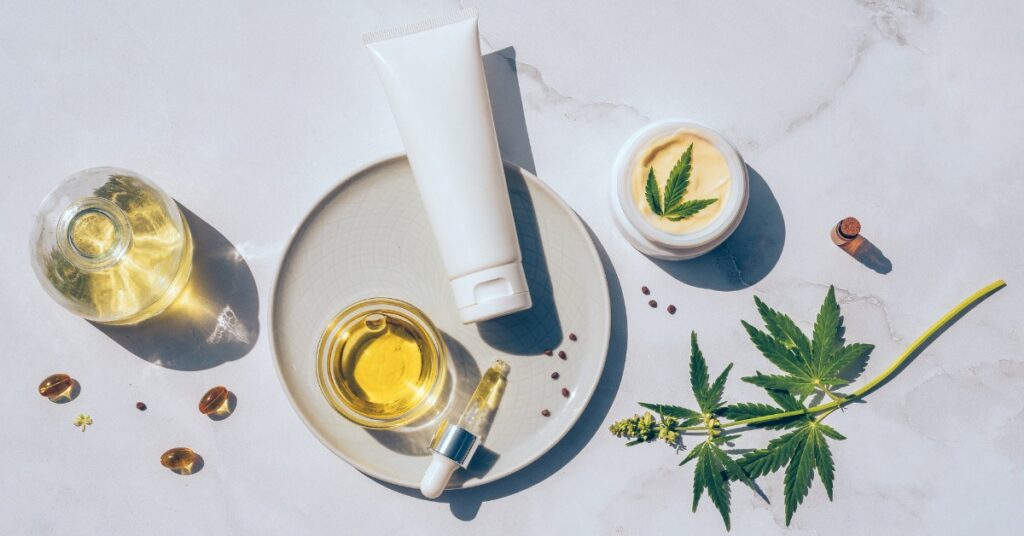
Let’s say you bought a bottle of CBD oil a while ago, and you’re not sure if it’s still good. Here are a few ways to determine if your CBD oil has expired:
Fresh CBD oil is usually clear or golden in color. If it looks cloudy, darker than usual, or if the texture becomes thick or grainy, it’s almost certain that your CBD has gone bad.
A good-quality CBD oil usually has a mild, earthy smell. If it turns sour, rancid, or otherwise unpleasant, that's another sign your CBD oil has expired.
When fresh, CBD oil tastes earthy or herbal, but it shouldn't be sour or bitter. If the flavor changes drastically, your CBD oil may have expired and should be tossed out.
Expired CBD won't have the same effects you're used to. If your usual dose isn't as effective as before, your CBD might have lost its potency. Decreased effectiveness can be a sign that your CBD has gone bad.
It’s not just oils you need to keep an eye on. CBD gummies, creams, capsules, and other products can all expire.
CBD gummies might turn hard, sticky, or dry. If they smell sour or chemically sharp, or you see mold on them, it’s time to toss them. Also, a bitter or stale flavor could mean they’ve gone bad.
CBD creams or topicals can separate or change texture. If the cream feels clumpy, too runny, or unusually greasy, it’s done for. A sour or rancid smell is another clear sign it’s expired.
CBD capsules can go bad, too. Look for changes in color, smell, or texture. If they feel sticky, brittle, or smell odd, don’t risk it.
When something seems off, it probably is. Don’t hang onto CBD products that look, smell, or taste wrong.
The shelf life and overall quality of your CBD products aren’t down to just CBD itself. Multiple factors, from ingredient quality to extraction methods, play a role here.
In most cases, consuming expired CBD isn't dangerous or toxic. The main issue is decreased effectiveness, which leaves you without the relief or benefits you expected.
However, there are exceptions. If your CBD oil has gone bad, especially if it smells rancid or has visible contamination, it might cause digestive discomfort. Symptoms could include nausea, stomach upset, or diarrhea, though such cases are relatively rare.
To stay safe, always discard CBD oil that looks spoiled. If you have any doubts, it's always best to replace it with a fresh product.
Your CBD products are less likely to go bad if you store them properly. Make sure to:
Yes, CBD products expire, but staying safe is simple once you know the signs. Check your CBD regularly for any changes in appearance, smell, taste, or effectiveness. Remember, expired CBD typically won’t harm you, but it won’t deliver the results you expect either.
By choosing high-quality products, paying attention to ingredient freshness, and storing your CBD properly, you’ll maximize shelf life and get the most out of your investment.
And if you’re unsure, toss it. It’s always better to be safe than sorry.
We’re not taking CBD oil for its taste, but the flavor really isn’t something you can look forward to. If you’ve ever tried it straight under the tongue and immediately regretted your life choices, you’re in the right place.
Plenty of people are wondering why CBD oil tastes bad, and more importantly, how to make it less yucky.
So, what does CBD oil taste like exactly?
That depends on the kind you’re using, but in most cases, it tastes earthy and bitter. Full-spectrum CBD oil especially tends to carry a strong flavor profile that reminds people of raw plants or green vegetables. It's not necessarily gross, but it’s definitely not subtle either.
If it lingers in your mouth, you’ll probably start noticing a slightly metallic aftertaste. And for some people, that’s the dealbreaker. But don’t worry, there are easy ways to fix it.
The reason CBD oil tastes bad usually comes down to the ingredients, and we’re not just talking about the CBD itself. Most oils are made with hemp extract and a carrier oil like MCT, olive, or hemp seed oil. Hemp extract is naturally earthy and slightly bitter, and depending on how it’s processed, that flavor can be pretty strong.
If you’re using a full-spectrum or broad-spectrum CBD oil, there’s even more going on. These include other cannabinoids, flavonoids, and terpenes, compounds that enhance the effects but also add to the flavor. Terpenes like myrcene and caryophyllene bring peppery or musky notes, while chlorophyll from the raw plant matter can leave a sharp, almost metallic aftertaste.
Some CBD oils are better filtered or use flavor-masking additives, but if yours is unflavored or more “natural,” it’s probably just how the plant tastes. That’s just the price of keeping things clean and potent.
You’re not doing it for the flavor.
The reason you hold CBD oil under your tongue (called sublingual use) is because it gets absorbed faster. There are tiny capillaries under the tongue that let the cannabinoids enter your bloodstream directly, so you feel the effects quicker than if you just swallowed it.
Swallowing it straight away means it has to go through your digestive system and liver first, which takes longer and can reduce how much your body actually uses.
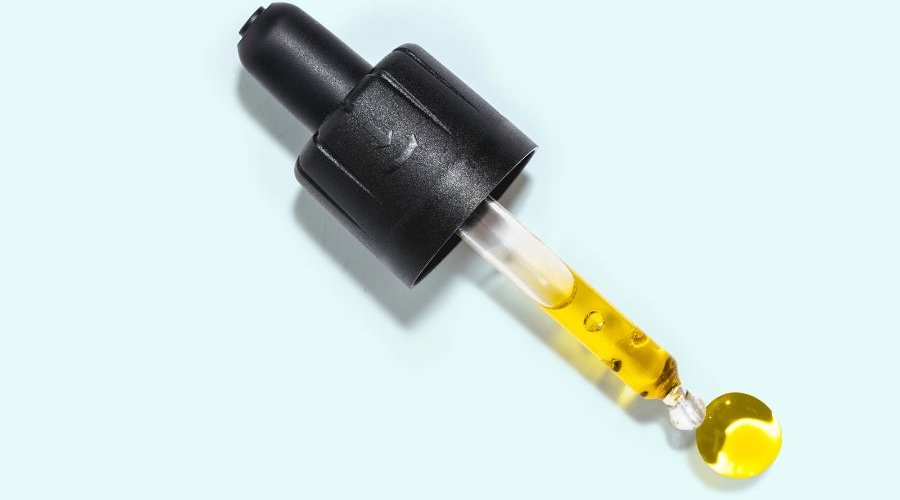
If you’re still cringing after every drop, give these tried-and-true tips a shot that can help make CBD oil taste better without compromising how it works.
This is the easiest first step. Many brands offer flavored versions of their CBD oil, often infused with essential oils or natural flavoring like mint, citrus, or vanilla. While it won’t make CBD oil taste like dessert, it definitely tones down the earthy bitterness. Just make sure the flavoring is natural and the oil itself is still high quality, no one wants fake additives just to cover up poor extraction.
After sublingual application, try chasing down the oil with a snack. Fatty foods will work better than sweets, though. CBD is fat-soluble, which means it binds better with fats and may absorb more efficiently when taken with them. Try a spoon of peanut butter, a piece of cheese, or a handful of nuts. Plus, sweet flavors can clash with the bitterness and make it worse.
If you’ve ever taken a shot of tequila, you know what a lime can do. And it applies here, too. After holding the oil under your tongue for 30-60 seconds, quickly bite into a fresh slice of citrus. The acidity instantly cuts the bitterness, and the sharp citrus flavor resets your taste buds.
If you already have unflavored CBD oil and can’t stand the taste, you can buy empty gelatin or vegetarian capsules and fill them yourself. It’s a bit of effort, but you avoid the flavor completely, and you still get to use your current product. Just remember that since the oil goes through your digestive system, the effects take longer to kick in compared to sublingual use.
If you don’t have the time or patience for mixing things, just swap your CBD oil for CBD gummies. They’re pre-dosed and taste great. You’ll sacrifice a bit of bioavailability since they go through digestion, but for a lot of people, that’s a fair trade.
CBD isolate is the purest form of CBD, stripped of all other cannabinoids, terpenes, and plant compounds. That means no grassy flavor. That said, you do lose the entourage effect you get with full-spectrum CBD, which includes more natural compounds that may enhance benefits. But if flavor is your main obstacle, isolate can be a clean alternative that gets the job done.
If the CBD oil taste has been ruining the experience for you, you have plenty of options. You don’t have to suffer through bitterness just to feel the benefits. A few simple tweaks will make all the difference. Just remember, if your CBD oil tastes bad, change how you take it, not whether you take it.
If you’ve been using CBD regularly, you might’ve noticed it doesn’t always feel the same. Some people say the effects fade. Others say they need less over time.
It’s enough to make anyone wonder: what’s actually going on?
Let’s see what CBD tolerance really means, and whether it’s something you should even be worried about.
When people talk about CBD tolerance, they usually mean this: they’ve been taking the same amount of CBD, but it doesn’t feel like it’s doing as much anymore. So they wonder, can you build a tolerance to CBD the same way people do with things like caffeine, THC, or alcohol?
Tolerance, in general, happens when your body gets used to a substance. Over time, it adjusts, and the same dose just doesn’t hit as hard. With THC, that’s well documented. It binds directly to certain receptors in your endocannabinoid system (ECS), and when it’s used often, those receptors respond less.
But CBD works differently. Rather than binding directly to receptors, it may interact with pathways that support the ECS’s role in balancing stress, rest, and general wellness.
Still, that doesn’t automatically mean you can’t build a tolerance to CBD. Everyone’s body is different. Some people might feel like they need more CBD after a few weeks or months. Others might take the same amount every day for years and feel fine.
So, do you build a tolerance to CBD?
Technically, it’s possible, but not in the way you might with other substances. There’s no clear evidence that regular CBD use leads to the kind of escalating need you’d see with THC or prescription medications. But some people still feel like it’s not working the way it used to, and that’s a real experience worth exploring.
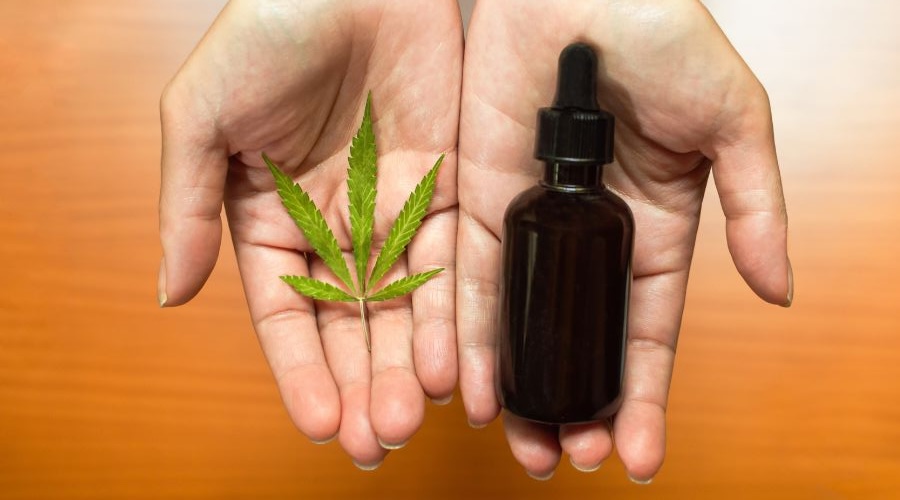
Now here’s the twist, some people report the opposite of CBD tolerance. Instead of increasing the dose, some report that over time they need less to notice the same effects. This is often called reverse tolerance.
So what’s going on?
Reverse CBD tolerance refers to your body becoming more efficient at using the CBD you’re taking. Over time, regular use may support your endocannabinoid system enough that it doesn’t need as much help. That means the system gets better at keeping things like mood, sleep, and stress in balance on its own, so a lower dose of CBD might still do the trick.
It’s not something everyone experiences. And there’s no guarantee it’ll happen because you take CBD regularly. But if you’ve found that a smaller amount of CBD works just as well, or better, than it did when you started, reverse tolerance might explain it.
There’s no need to chase bigger doses if what you’re taking is already helping. In fact, sometimes cutting back a little can give your body space to respond better.
That said, if it seems that CBD stopped working for you altogether, there could be something else going on.
If CBD once felt effective but now seems less noticeable, it doesn’t necessarily mean you’ve developed full tolerance. There are a few common reasons things might’ve changed.
One of the biggest is inconsistency in the product. Not all CBD products are created equal. Some don’t contain the amount of CBD they claim. Others use low-bioavailability formulas that your body can’t absorb quite as well. If you’ve recently switched brands, or now use a different batch from the same brand, that could explain why the effects feel off.
Your body also plays a big role. Metabolism, body weight, hormones, stress levels, and even sleep patterns can change how you respond to CBD. If you’re under more stress than usual or sleeping poorly, your endocannabinoid system might be out of sync, and that could feel like CBD tolerance.
Another factor could be your delivery method. Taking CBD oil under your tongue is absorbed differently than popping a gummy or rubbing on a cream. If you’ve changed how you take it, that could affect how much gets into your system.
There’s also the possibility of developing a personal baseline. Let’s say you started taking CBD to calm your mind. After a while, your head feels clearer and your racing thoughts are better managed. You don’t feel the CBD anymore, not because it’s not working, but because it’s already helped bring things back into balance.
So you might think you’ve built a tolerance to CBD, but there are questions to ask first. What’s changed in my routine, my body, or my product?
Let’s not increase your dose just yet, it may be time to step back and reassess.
When you sense diminishing effects, a brief break might help your body reset. This pause can allow your endocannabinoid system to reorient and potentially make your usual dose feel more impactful again.
You don’t need a long reset, just a few days to a week. During that time, support your body by getting quality sleep, eating nutrient-rich foods (especially those with omega-3s), and staying active. These habits help your ECS system function well on its own.
If you feel like you’re building a tolerance to CBD, this reset period is a way to test that out for yourself. You could start to feel stronger effects after the break, especially if you were slowly building CBD tolerance without realizing it.
If your usual dose starts to feel weak, it could be a sign that you’ve built a tolerance to CBD. In some cases, adjusting your dosage makes sense, especially if your body is dealing with more stress than usual.
But if raising your dose hasn’t changed anything, taking a break might be a better strategy. A short pause can sometimes help your body re-sensitize to the effects.
Some people never experience CBD tolerance. Others notice they’ve slowly built a tolerance to CBD and need to adjust. A short break or minor change is often enough to get back on track.
And while changing products, adjusting doses and resetting your endocannabinoid system can sound like a hassle, just remember that the benefits of CBD are well worth it.